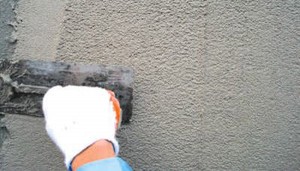Application of Hydroxypropyl Methyl Cellulose in Building Materials
In building materials, hydroxypropyl methyl cellulose can act as dispersing agents, thickeners and binders, and hydroxypropyl methyl cellulose is mainly used in the molding of the cement mortar and plaster products. It is used in the cement mortar to increase its adhesion, reduce flocculation, improve the viscosity, shrinkage, and water retention, reduce the water loss of concrete surface, enhance the strength, prevent the occurrence of cracks and weathering effects of water-soluble salts.
In the building materials, the dosage of hydroxypropyl methyl cellulose is very small, only 0.1% to 1%. But its effects are great and can be used as plasticizers, water-retaining agents, air-entraining agents and retarders in coatings, gray paste, mortar and cement products to play the role of water retention or the adhesive force between the bases. In addition, hydroxypropyl methyl cellulose also meets the demands of environmental protection. In the dry-mixed mortar, it helps to avoid performance instability caused by the formation of mixture, pollution of the surrounding environment, poor construction conditions and low labor efficiency. Tile adhesives and the internal & external wall putty usually use 107 adhesive before. However, from an environmental point of view, the application of cellulose ethers can be more preferable, such as HydroxyEthyl Cellulose and hydroxypropyl methyl cellulose.
The effects of adding cellulose ethers include: 1). improving the initial and final setting time of cement; 2). enhancing the strength of cement mortar to overcome limits; 3). improving the water-holding capacity of cement and gypsum; 4). reducing the compressive strength and shear strength of cement mortar; 5). improving the bonding performance of mortar.
